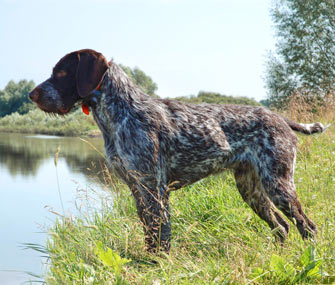Fungal Infections: What Puts Pets at Risk, How to Spot Them and Treatment Options
Published on February 08, 2017
Skip To

What Causes Fungal Infections?
Infections are caused by different kinds of fungi in the environment, many of which can also cause disease in humans. Generally named after the organisms involved, the most common fungal infections in dogs and cats include histoplasmosis, blastomycosis, cryptococcosis and coccidiomycosis. Other fungal organisms that are potentially problematic for pets include Aspergillus, Pythium and Lagenidium.Fungal spores are often found in decaying vegetation in wet or damp soil and swamps, especially in environments that have been contaminated by bird droppings. Certain fungal organisms tend to be found in specific geographic regions, for example, Blastomyces and Histoplasma are most commonly found along river valleys such as the Mississippi, Missouri and Ohio River Valleys, while Coccidioides is most commonly found in the southwestern U.S. Still, fungal infections have been confirmed all across the country.
Both Dogs and Cats Are at Risk
Most dogs and cats become infected when they inhale fungal spores, although it can also happen if they accidentally swallow or potentially have skin contact with the spores.Pets who tend to be outdoors or have outdoor exposure are typically at greater risk than indoor-only pets. However, with certain organisms, indoor pets appear to be at equal risk as outdoor pets.
Certain types of fungal infections may be seen more commonly in dogs than cats and vice versa. For instance, Blastomyces is more commonly seen in dogs, whereas Cryptococcus is more commonly identified in cats. Both cats and dogs seem to be at risk for histoplasmosis.
Although some fungal organisms are considered zoonotic, meaning they can be spread from pets to humans, this kind of transmission is rare. However, the same environments that pose a threat to pets can also expose humans to these fungal organisms.
What Are the Signs of Systemic Fungal Disease?
The signs can vary, depending on the fungal organisms involved. Animals with fungal disease may have vague signs such as weight loss. Depending on the fungus involved, they may also experience more specific signs such as a coughing or trouble breathing, skin lesions, eye abnormalities, lameness, fever or neurological abnormalities such as seizures, to name a few.Blastomycosis, for example, typically affects the lungs but may also cause draining skin nodules, weight loss, lameness, eye inflammation and enlarged lymph nodes.
In cats with cryptococcosis, masses inside the nose and deformation of the nose and face are classic clinical signs. Nasal discharge, skin lesions, eye abnormalities and neurologic signs such as seizures, difficulty walking and behavioral changes are other clinical signs.
How Is a Fungal Disease Diagnosed?
If a fungal disease is suspected, your veterinarian will give your pet a thorough physical exam and ask where you’ve traveled recently with your pet. Blood and urine tests may be recommended as well as chest X-rays if your pet is experiencing respiratory signs.If your pet is experiencing nasal signs (such as discharge from the nose), a computerized tomography (CT) scan and nasal biopsy, or tissue sample, may be recommended to obtain a diagnosis. Generally, tissue and cell samples from the lesions tend to be the most specific way to diagnose fungal diseases.
Is Fungal Disease Treatable?
Once a diagnosis is confirmed, antifungal drugs are available for treatment.Depending on the severity of clinical signs and disease, hospitalization and supportive care may also be recommended. This might include supplemental oxygen if severe respiratory signs are present, gastrointestinal supportive drugs and potentially a diet adjustment (if vomiting and/or diarrhea are involved), or pain medications if the infection has spread to the bones.
Treatment is often expensive and prolonged. You must be dedicated to administering the medication for up to several months and following up with your veterinarian to monitor your pet’s progress.
If your pet is showing clinical signs associated with fungal disease or if you are concerned that your pet may be at risk, please talk with your veterinarian. She will be able to discuss risk factors and determine if your pet has contracted a fungal infection.
More from Vetstreet:





